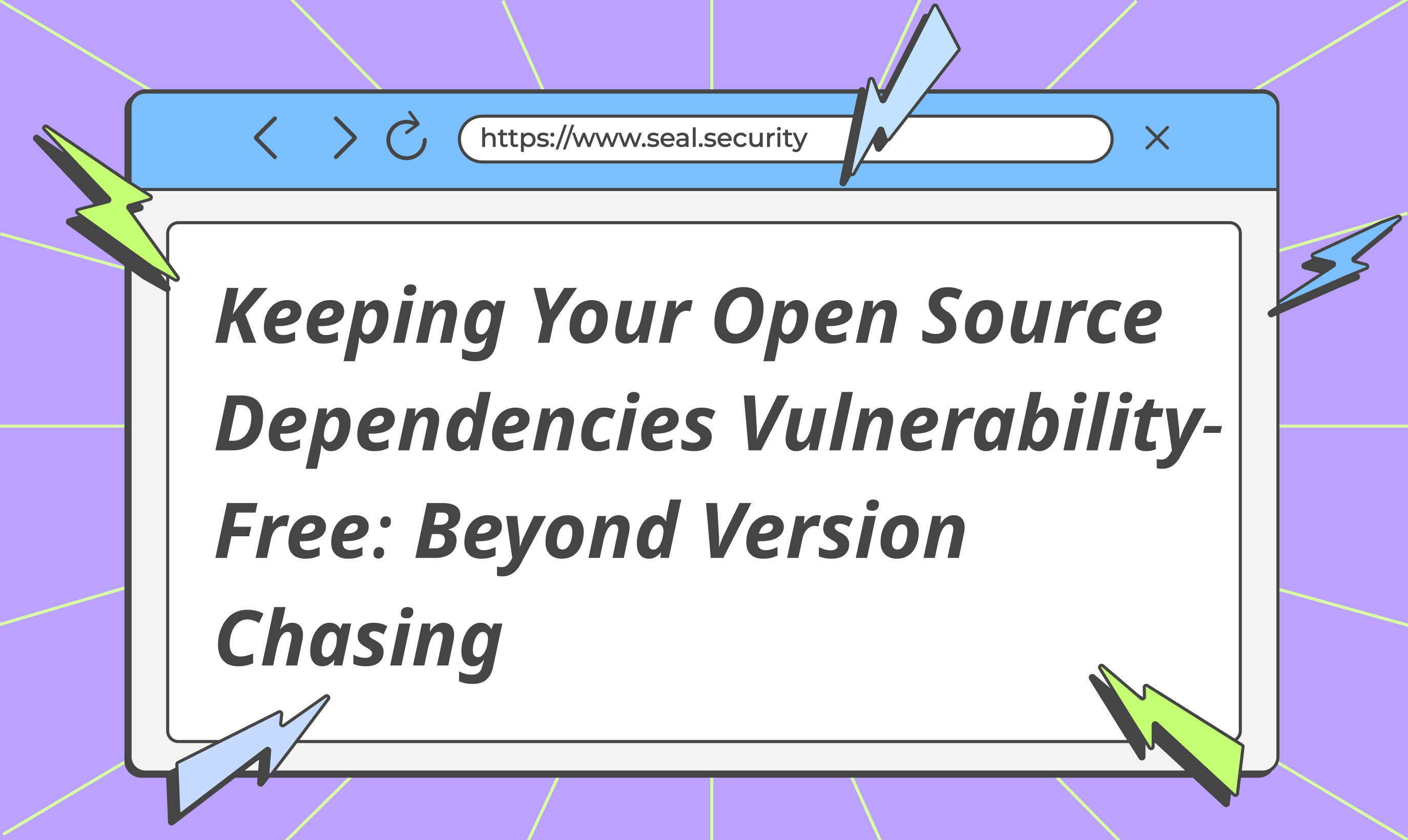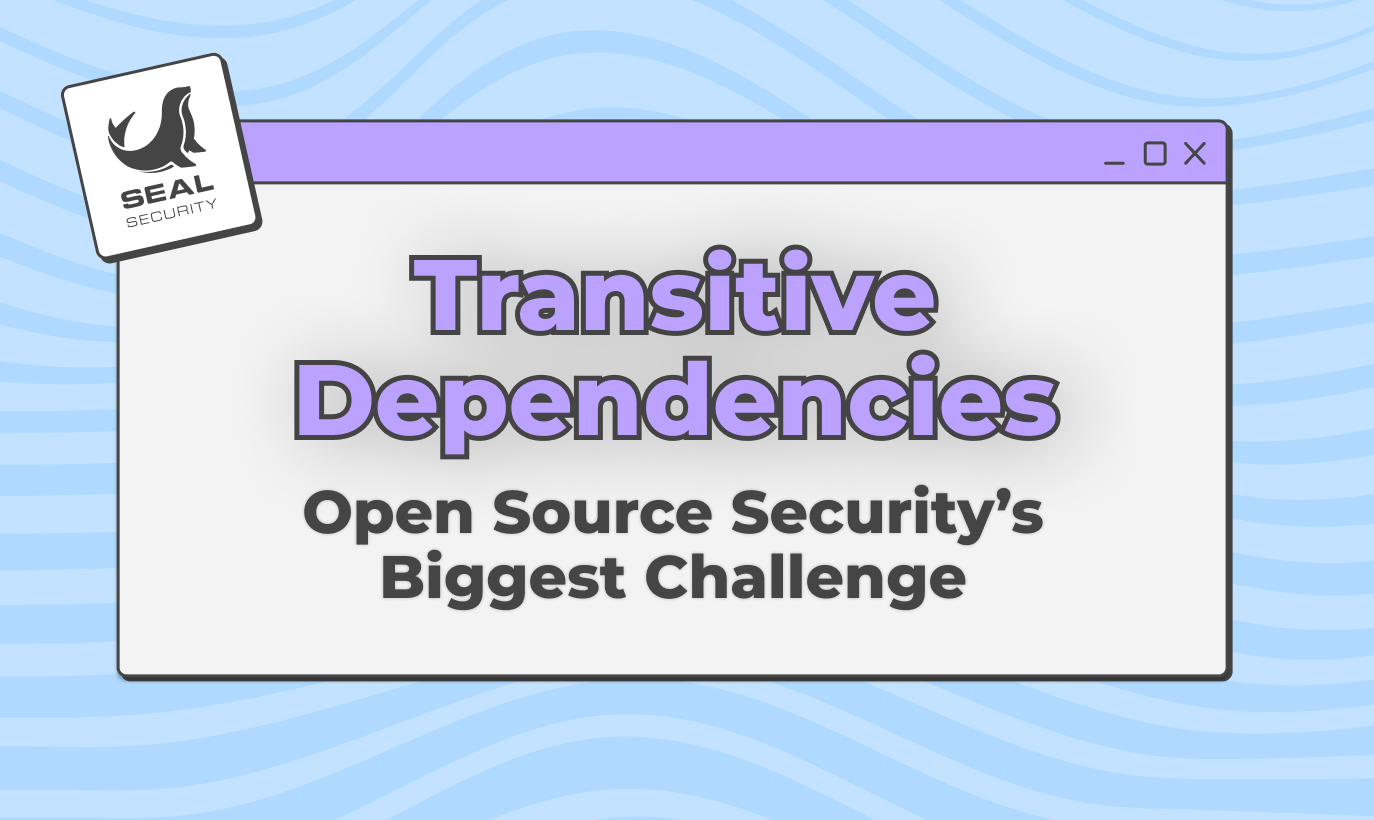Keeping Your Open Source Dependencies Vulnerability-Free: Beyond Version Chasing

Open source fuels modern development. It's a vast library of pre-built solutions that empower developers to focus on innovation, not reinvent the wheel. But with every dependency comes the responsibility of maintaining it. The traditional approach emphasizes staying on the bleeding edge, updating packages constantly. However, this relentless pursuit of the "latest" version can introduce roadblocks and slow down development.
This blog post explores the complexities of dependency management, unveiling why the constant update treadmill might not be the most efficient approach. We'll delve into the challenges developers face and propose alternative strategies for a more balanced and secure open source ecosystem.
Upgrade Roulette: The Danger of Breaking Changes
Keeping dependencies up-to-date is crucial, but the process can feel like a gamble. New versions often introduce breaking changes - alterations in how the software behaves that can require adjustments to your own codebase. These changes can range from dramatic shifts, like the removal of entire APIs, to seemingly minor tweaks, like adjustments to default parameter values. Regardless of scale, any change has the potential to disrupt your code's functionality, causing anything from minor hiccups to critical errors.
The Upgrade Tango: Why Dependencies Sometimes Change Their Tune
While dependency updates are essential, navigating breaking changes introduced by maintainers can be a complex dance. Here's why these disruptions occur:
- Bug Fixes and Security Patches: Sometimes, fixing bugs or vulnerabilities necessitates altering the code's behavior, leading to breaking changes.
- Feature Deprecation: Maintainers may deprecate outdated features, requiring users to migrate to newer approaches. Pillow v9's release notes illustrate the first two points well.
- Unintended Consequences: Even with good intentions, altering the codebase can introduce unforeseen breaking changes. The passport-saml library's breakage between 3.2.0 and 3.2.1 is a case in point.
The Versioning Ideal vs. Reality
Ideally, semantic versioning would streamline updates. Major version bumps signify breaking changes, allowing developers to confidently upgrade minor or patch versions. However, reality presents challenges:
- Inconsistent Adoption: Not all ecosystems strictly follow semantic versioning. Python and Java have looser adherence, and frameworks like TensorFlow explicitly warn of potential backward incompatibility even in patch versions. The Python 3.7 interpreter's addition of the "async" keyword is a stark example of a breaking change not reflected in versioning.
- Maintainer Discretion: Even in stricter ecosystems like npm, maintainers have final say on version bumps. They might introduce unintended breaks or underestimate the impact of changes, leading to disruptions.
The High Cost of Broken Upgrades: Why Early Detection Matters
Breaking changes can be costly, as evidenced by Datadog's outage and the estimated $5 million in damages. Ideally, breaking changes are:
- Clearly Documented: Detailed release notes outlining potential disruptions allow developers to prepare for upgrades.
- Signaled by Major Version Bumps: A major version bump serves as a clear warning that significant changes may require code adjustments.
- Caught Early: Automated tests with good coverage can identify breaking changes before deployment.
However, the reality is often less than ideal:
- Subtle Breaks: Changes can be subtle, evading detection by automated tests and leading to production issues.
- Unforeseen Breakages: Upgrades may introduce unforeseen consequences, requiring quick fixes in a high-pressure environment.
Early detection is crucial. The sooner a breaking change is identified, the less disruptive and costly it becomes.
The Shadow of Uncertainty: Fear of Breaking Changes
The prevalence of undocumented or subtle breaking changes casts a shadow of uncertainty over seemingly straightforward upgrades. Even if an update appears benign, developers lack absolute certainty without a deep dive into the code changes themselves. This analysis is time-consuming and demands expertise in potentially unfamiliar codebases, offering no guarantee of foolproof conclusions.
This inherent uncertainty transforms each upgrade into a calculated risk, weighed against the potential benefits. Facing the prospect of midnight troubleshooting due to unforeseen issues, developers understandably gravitate towards the "if it ain't broke, don't fix it" mentality. It's not just the reality of breaking changes that hinders updates, but the very fear of encountering them.
The Time Tax: When Upgrades Stall Progress
Even technically feasible upgrades can be significant time sinks:
- UI Framework Upgrades: Upgrading major React versions, for example, can be time-consuming due to potential UI breakages not always caught by automated tests. This can require weeks of effort to fix visually subtle issues.
- Database-Related Upgrades: Upgrading Django or ORM libraries presents additional challenges. Maintaining database uptime is crucial, and disaster recovery from backups is a risky proposition. Some companies dedicate entire teams for months to execute such upgrades.
- API Overhauls: Sometimes, libraries like ejs undergo major version bumps that completely change their behavior and APIs. Migrating to version 3 from version 2 of ejs, for instance, necessitates significant code adjustments, introducing potential new bugs into the new codebase.
Development teams often struggle with this time commitment, especially since upgrades frequently offer minimal value to the product and carry the risk of introducing new issues.
The Upgrade Abyss: When Easy Updates Become Epic Journeys
Not all upgrades are created equal. Some scenarios push the boundaries of practicality:
- End-of-Life Quandaries: Consider CentOS 7 users. Red Hat stopped building third-party libraries over a year before official end-of-life, leaving users with limited options. Building libraries themselves was risky and time-consuming. Alternatively, migrating to a new Linux distribution was an even bigger undertaking, potentially taking months. While tools like Google's CentOS to Rocky Linux migration utility exist, they often have unresolved issues, adding frustration to the process.
- Python 2 to 3 Migration Hurdles: Libraries that only support Python 3 create a challenge for Python 2 codebases. While the languages are similar, the differences necessitate significant code changes. Patching together Python 2 and 3 libraries is a risky proposition, but replacing the entire tech stack can be daunting, especially when older libraries lack Python 3 alternatives.
These extreme scenarios highlight how seemingly straightforward upgrades can morph into epic journeys.
The Conundrum of Compatibility: Walking the Dependency Tightrope
Even with good intentions, upgrades can be thwarted by compatibility issues:
- Transitive Dependency Woes: Open-source dependencies often rely on numerous other libraries. If the latest version of your direct dependency doesn't keep its own dependencies up-to-date, you'll be stuck with outdated versions deeper in the dependency tree.
- Flawed Workarounds: Advanced package manager features allow overriding transitive dependencies, but these solutions are imperfect and introduce the risk of breaking changes. The original dependency maintainer might have intentionally avoided upgrading a specific transitive dependency due to known conflicts, and overriding their decision could lead to unforeseen issues.
- Framework Lockstep: Frameworks often rely on specific versions of other libraries to function correctly. Upgrading the Spring framework, for example, might necessitate upgrading the Java version and a cascade of other libraries. This creates a ripple effect, limiting flexibility in version selection.
In these scenarios, developers find themselves on a tightrope, juggling the desire for updates with the constraints imposed by compatibility requirements. Upgrading to the "latest" version simply may not be feasible.
The Legacy Labyrinth: Where Upgrades Become Expeditions
Upgrading dependencies in actively maintained codebases holds some value - new features or bug fixes might justify the effort. However, many organizations grapple with legacy components - code no longer actively developed but lingering in production to support niche use cases. Upgrading these components becomes a complex and often undesirable task:
- Business Dissonance: Investing development resources in legacy code doesn't always align with business priorities.
- Amplified Challenges: The upgrade hurdles discussed earlier become even more pronounced with legacy code. Unfamiliarity with the codebase, a defunct testing environment, and an outdated tech stack all contribute to the difficulty. Debugging issues becomes a heightened challenge due to the lack of familiarity with the code's intricacies.
The combination of these factors transforms dependency upgrades in legacy systems into potential expeditions, fraught with risk and requiring significant time investment.
Seal Security: Security Without the Upgrade Scramble
Let's face it, keeping open-source dependencies up-to-date can be a frustrating, time-consuming battle. But what happens when a critical vulnerability emerges, and upgrading feels like the only option?
At Seal Security, we understand that constant upgrades aren't always feasible. We believe security shouldn't come at the cost of endless version chasing and potential disruptions.
Here's where Seal Security steps in:
- Decoupling Security from Upgrades: Our fully compatible, patched versions deliver critical security fixes without forcing unnecessary feature updates.
- Upgrade on Your Terms: Developers can choose to upgrade for new features when it makes sense, not because of a missing "if" statement somewhere.
- Escape Upgrade Hell: By eliminating the upgrade scramble, organizations save valuable developer time, minimize production risks, and maintain a robust security posture.
Seal Security empowers you to focus on innovation, not version roulette. Let's talk about how we can keep you secure.





